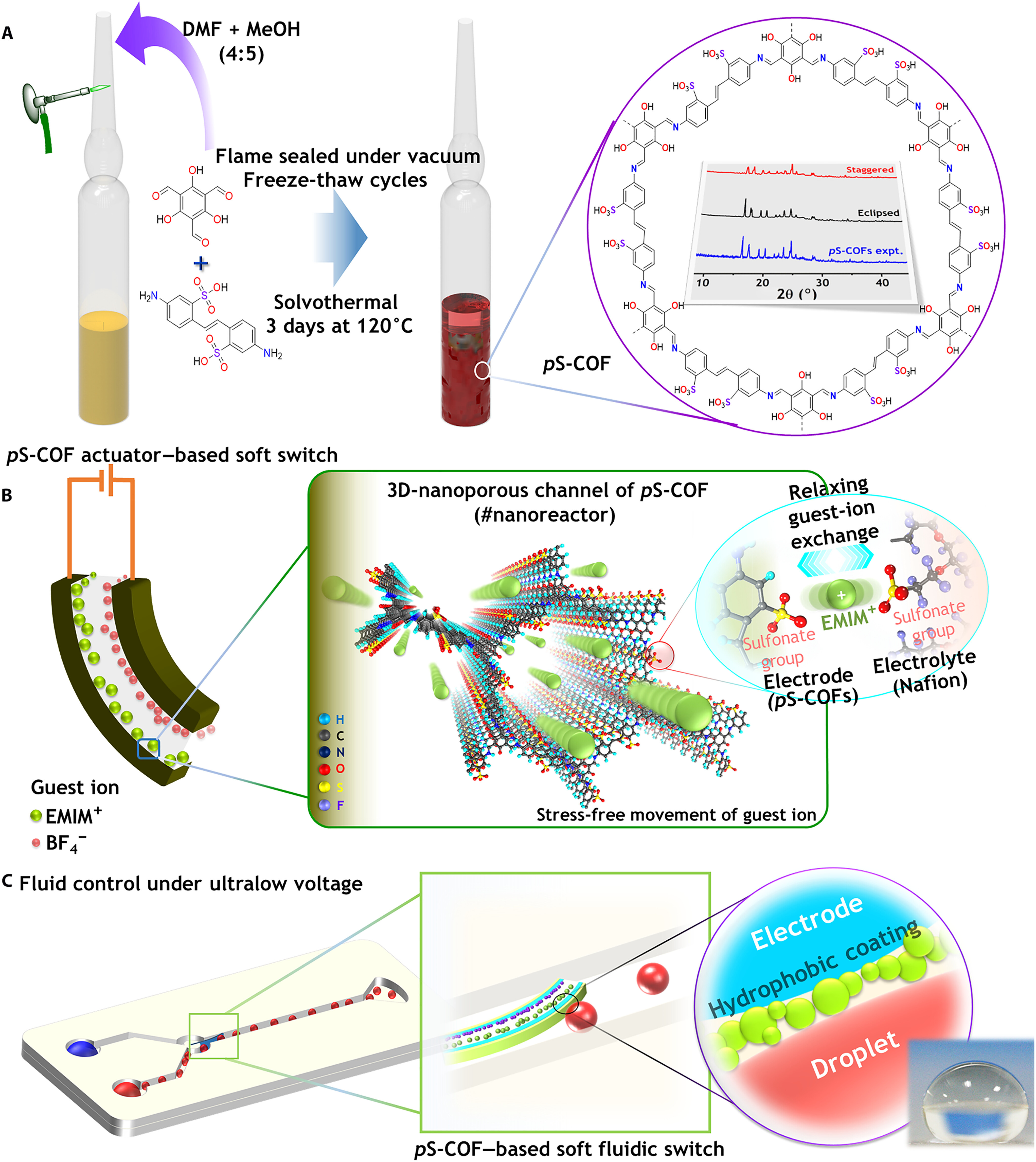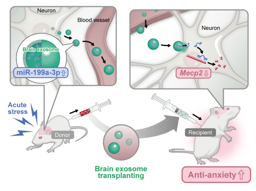Common host for relaxed exchange of guest ions
Published in Chemistry, Electrical & Electronic Engineering, and Materials

Tailoring transfer dynamics of mobile cations across solid-state electrolyte-electrode interfaces is crucial for high-performance electrochemical soft actuators. In general, actuation performance is directly proportional to the affinity of cations and anions in the electrolyte for the opposite electrode surfaces under an applied field. Herein, to maximize electrochemical actuation, we report an electronically conjugated polysulfonated covalent organic framework (pS-COF) used as a common electrolyte-electrode host for 1-ethyl-3-methylimidazolium cation embedded into a Nafion membrane. The pS-COF–based electrochemical actuator exhibits remarkable bending deflection at near-zero voltage (~0.01 V) and previously unattainable blocking force, which is 34 times higher than its own weight. The ultrafast step response shows a very short rising time of 1.59 seconds without back-relaxation, and substantial ultralow-voltage actuation at higher frequencies up to 5.0 hertz demonstrates good application prospects of common electrolyte-electrode hosts. A soft fluidic switch is constructed using the proposed soft actuator as a potential engineering application.
In electrochemical systems, specifically in electrical double-layer capacitors (EDLCs), the transformation of electrical energy into chemical energy is driven by the migration of electrolyte ions between the opposite electrodes. A high cycling efficiency combined with a long cycle life and exceptional manipulability achieved by subtle structural modifications of both electrode and electrolyte render EDLCs suitable for future energy storage devices. Electroionic soft actuators follow the EDLC principle, in which the migration of dissimilar electrolyte ions causes a bending deflection. Recent advances in the development of electronically conjugated carbon materials with good capacitance have demonstrated their potential applicability as active electrode materials for high-performance electrochemical soft actuators owing to adoptable antagonistic surface nanoengineering. The presence of π-conjugated polar functional moieties and large specific surface areas is considered the driving force in interfacial fast ion transfer processes owing to their switchable antagonistic electronic conductive path and ionic charge capacitance properties. It was shown that small changes in surface functionality can substantially alter the electrochemical properties of the active materials. However, developing a surface-functionalized active electrode material with desired characteristics and optimizing electrochemical actuation under ultralow voltages remain challenging tasks.
Herein, we report an electronically conjugated polysulfonated COF (pS-COF) for a common electrolyte-electrode host of electrochemical soft actuators. The electronically conjugated pS-COF is synthesized as an active electrode material to produce common surface sulfonate functionalities and facilitate the relaxing exchange of 1-ethyl-3-methylimidazolium (EMIM+) guest electrolyte cations embedded in Nafion. The structural authenticity and successful synthesis of the designed pS-COF are verified both experimentally and theoretically. The common surface sulfonate moieties of all-solid-state electrolyte-electrodes provide an easy and relaxing platform for the exchange accommodation of movable EMIM+ guest ions in an electrochemical environment. In addition, the electrode surface containing the 3D nanoporous channels of the crystalline pS-COF acts as a nanoreactor for the abundant stress-free movement of ions. Figure 1A illustrates the synthesis of polycrystalline pS-COFs with plausible chemical structures and shows the refined powder x-ray diffraction (PXRD) patterns obtained both experimentally and theoretically. Figure 1B schematically describes the ultralow-voltage–driven bending mechanism and basic configuration of the electroactive soft switch prepared from the as-synthesized pS-COF serving as an active electrode material. The fabricated electroactive soft switch was used to demonstrate the effective control of a fluid flow in a confined channel under an ultralow voltage (Fig. 1C). It is noteworthy that, unlike other actuators, the pS-COF–based soft switch exhibits the highest strain and force with an ultrafast response, which allows effective blockage of the target channel, leading to a unidirectional fluid flow. The superhydrophobic surface of the soft fluidic switch prevents the adhesion of liquid droplets and completely controls the fluid dynamics

Follow the Topic
Your space to connect: The Fuel cell technologies Hub
A new Communities’ space to connect, collaborate, and explore research on Electrochemistry, Chemical Engineering, and Fuel Cells!
Continue reading announcement



Please sign in or register for FREE
If you are a registered user on Research Communities by Springer Nature, please sign in